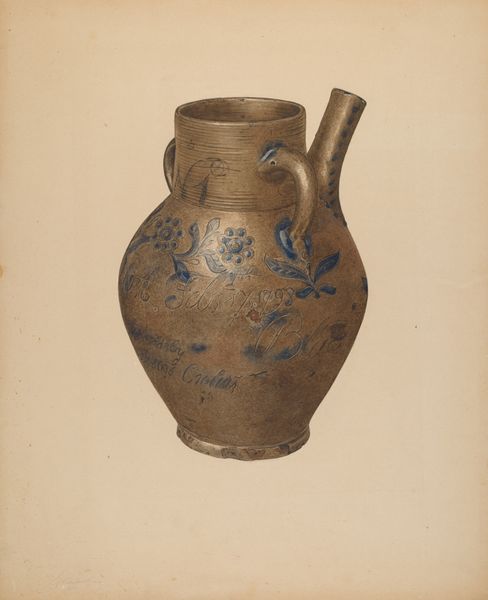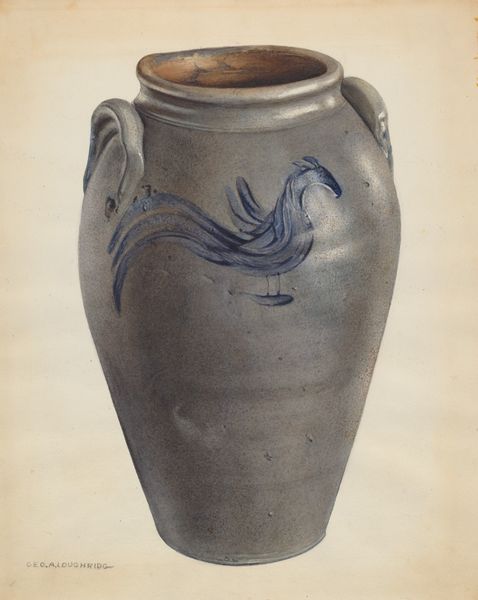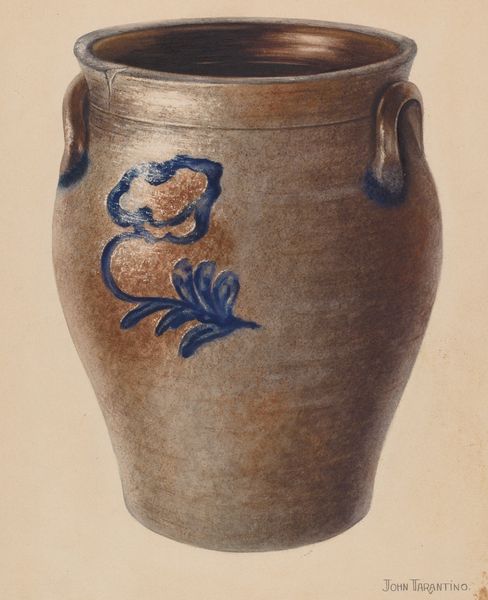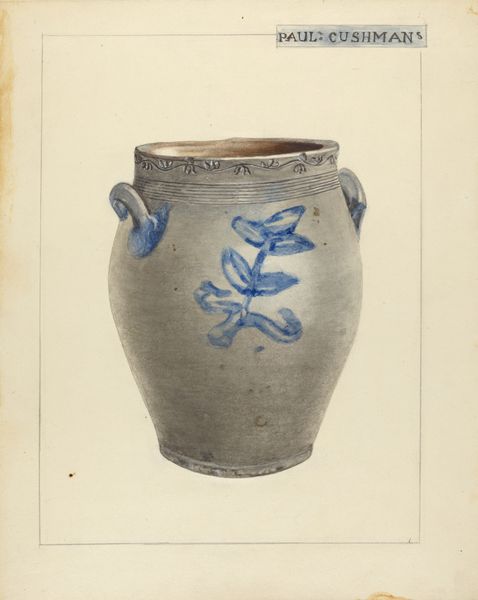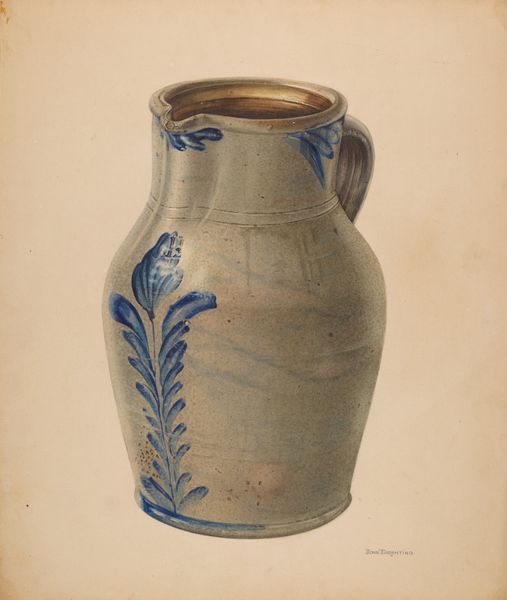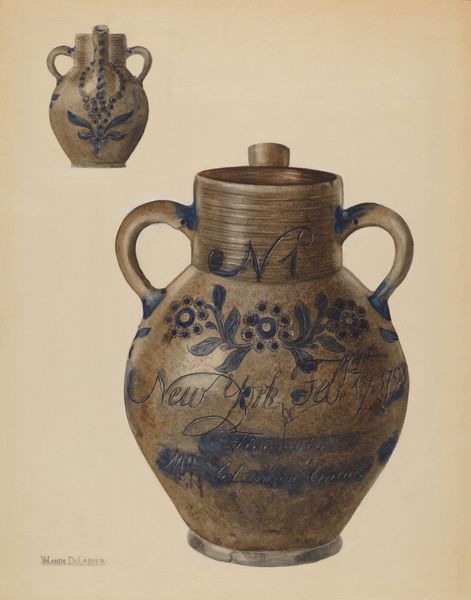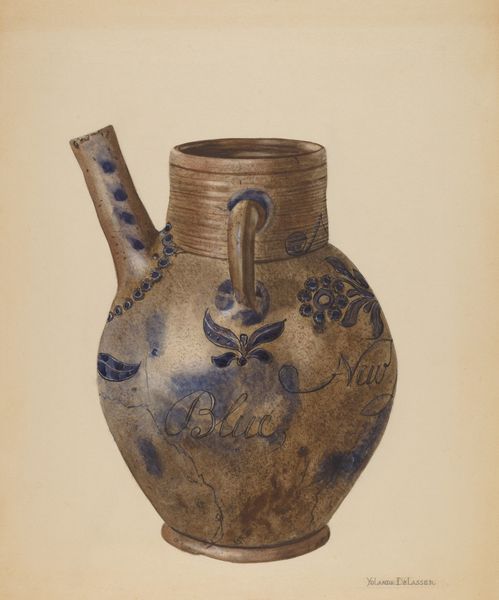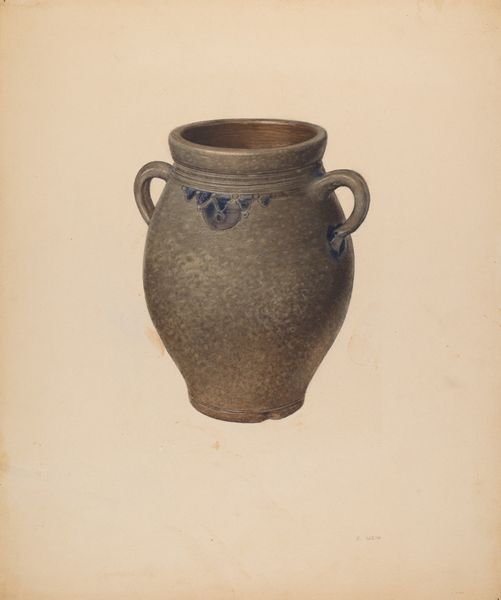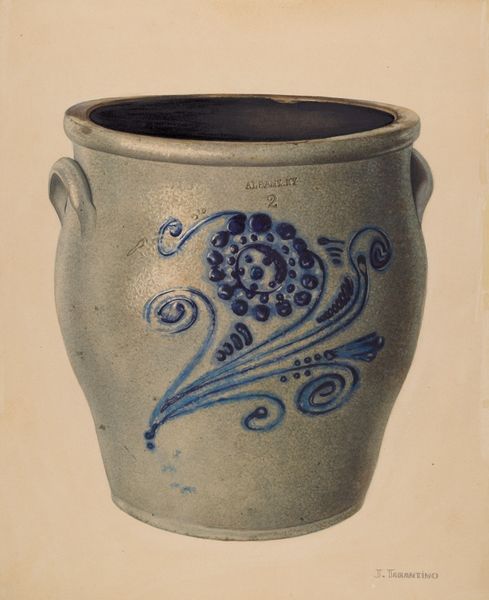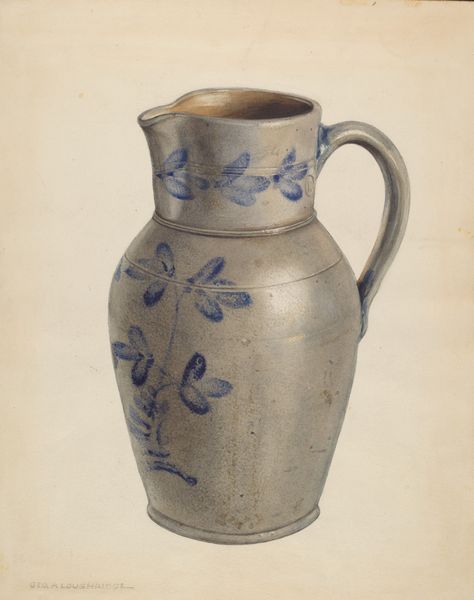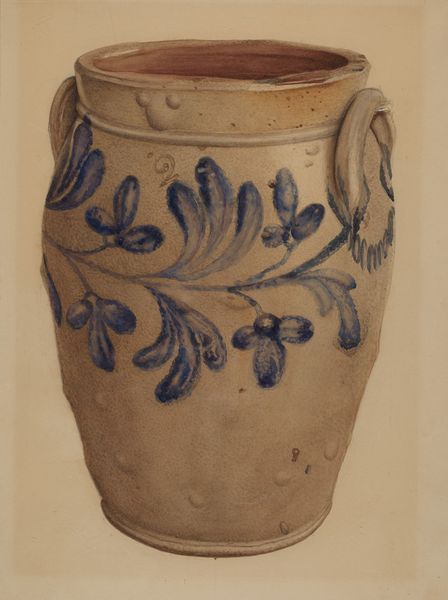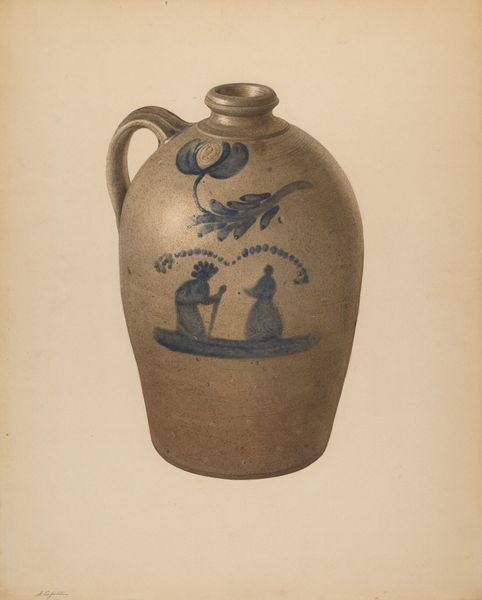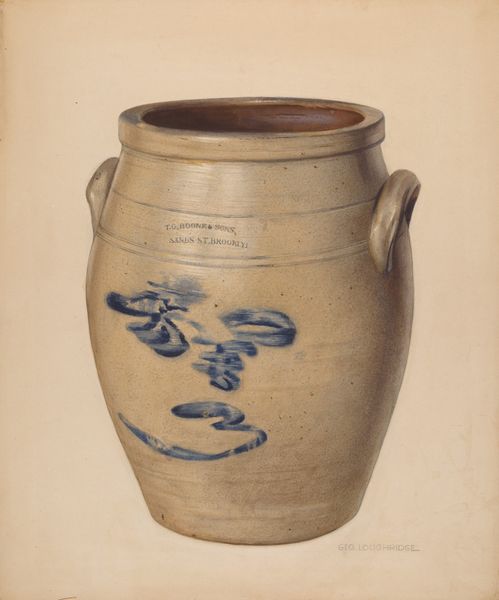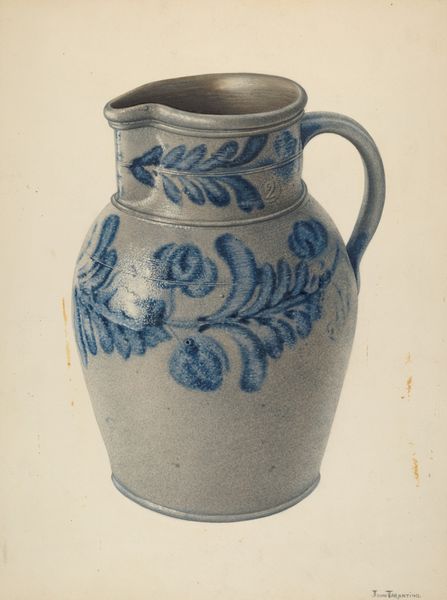
drawing, ceramic
#
drawing
#
ceramic
#
charcoal drawing
#
ceramic
#
watercolor
Dimensions: overall: 51.7 x 40.8 cm (20 3/8 x 16 1/16 in.) Original IAD Object: 22" Tall 9 7/8" Dia(base) 7 1/4" Dia(top) 12 1/2" Dia(max)
Copyright: National Gallery of Art: CC0 1.0
Editor: Here we have "Water Cooler," a drawing by Richard Barnett, created around 1938, using what appear to be watercolor, charcoal, and ceramic elements. I'm immediately struck by how simple and almost austere it is, despite the floral decoration. How do you read the composition and the interplay of these materials? Curator: The work is quite interesting, formally. Consider first the color palette, largely monochromatic save for the touches of blue. This limited spectrum forces us to focus on form and texture. The artist juxtaposes the smooth, cool surface suggested by the ceramic rendering against the looser, more organic quality of the foliage. Editor: Yes, that contrast between the hard, manufactured object and the softer, naturalistic designs… it's subtle but noticeable. The flat rendering feels deliberate too, flattening the space. Curator: Precisely. We are denied depth, yet the object is clearly presented as three-dimensional. What does this tension suggest about the artist's intentions regarding representation itself? Is it meant to accurately portray an object, or to explore the semiotics of shape, color, and texture through its representational form? Note the handles on either side, purely functional, and rendered almost abstractly. They offer pure form and solidity, balancing the two-dimensional decoration. Editor: I see what you mean! The handles pull my eye around the vase again. And you've given me a lot to consider about how the artist has focused on these visual properties of art instead of portraying an object as it exists in time. Curator: Indeed. Ultimately, analyzing this drawing demands an active engagement with its constitutive formal elements. By considering how each component functions individually and in relation to the others, we can unravel the layers of its intrinsic artistic meaning. Editor: That's been so helpful! Thanks for shedding light on the form and material relationships; I now view this piece through a completely different lens!
Comments
No comments
Be the first to comment and join the conversation on the ultimate creative platform.
